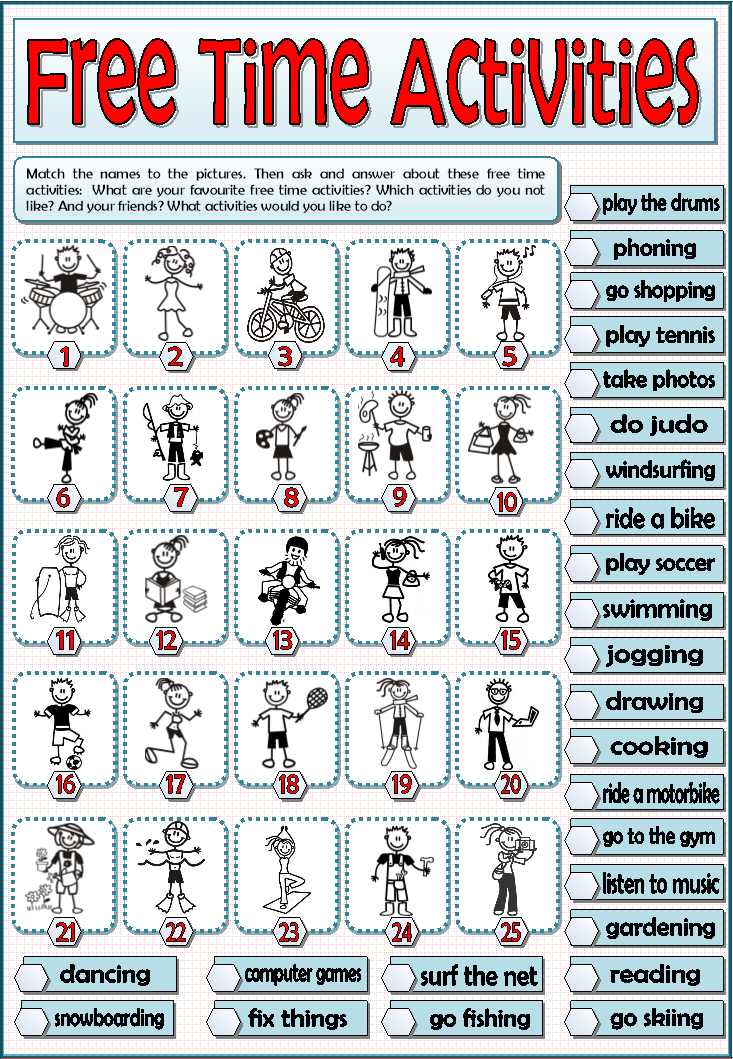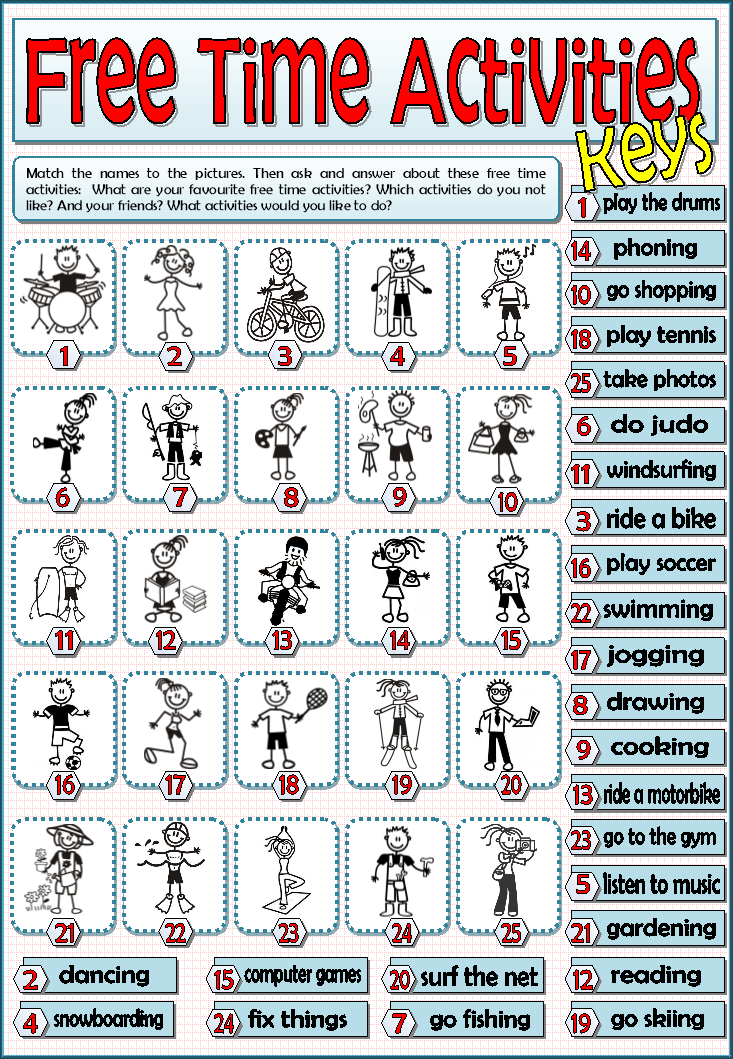Free Time. Order of the Day


Lesson plan
Class: 5
Unit: Free Time and Entertainment
Topic of the lesson: Free Time. Order of the Day. Structure to be going to
Aims:
- to introduce and active some vocabulary
- to develop basic skills
Type of the lesson: combined lesson
The procedure of the lesson
I. Greeting. Organizing
II. Warmer up activity
"Mind-Map" – What words do you associate with the unit ‘Free Time and Entertainment’? Let’s draw a mind-map.
III. Introducing the topic of the lesson
Today we are going to speak about what do we usually do in our free time
IV. Introducing and practising the new material
Task1 – Ex. 1. p. 76. Work in pairs. Write a list of activities you usually do in your free time
Example: to read a book, to listen to music, to watch TV, to play computer games, to meet friends, to help about the house etc
Task2 – Ex. 2. p. 76. Speak in class. Say which activities you usually do and how much time you spend on them
Example: I watch TV every day. I meet my friends four days a week: on Tuesdays, on Thursdays, on Saturdays and Sundays.
Task3 – Ex. 3. p. 76 Read the text and translate it into Hungarian (in words)
Task4 – Grammar Lab
Going to is not a tense. It is a special structure that we use to talk about the future.
The structure of going to is:
|
subject |
+ |
be |
+ |
going |
+ |
to-infinitive |
How do we use going to?
going to for intention
We use going to when we have the intention to do something before we speak. We have already made a decision before speaking. Look at these examples:
- Jo has won the lottery. He says he's going to buy a Porsche.
- We're not going to paint our bedroom tomorrow.
- When are you going to go on holiday?
In these examples, we had an intention or plan before speaking. The decision was made before speaking.
going to for prediction
We often use going to to make a prediction about the future. Our prediction is based on present evidence. We are saying what we think will happen. Here are some examples:
- The sky is very black. It's going to snow.
- It's 8.30! You're going to miss your train!
- I crashed the company car. My boss isn't going to be very happy!
In these examples, the present situation (black sky, the time, damaged car) gives us a good idea of what is going to happen.
Task5 – Ex. 4. p. 77. Read the dialogue of Ex. 3, page 76 again and complete Steve’s planner
|
Monday |
look after his sister |
|
Tuesday |
help his mother do the shopping |
|
Wednesday |
visit his granny |
|
Thursday |
take music lesson |
|
Friday |
orgainze chess club |
Task6 – Ex. 5. p. 77 Look at Kim’s planner and make sentences
1. She is going to meet her Granny on Sunday.
2. Is she going to watch a circus show on Monday? Yes, she is.
3. Kim is going to go to the swimming pool on Tuesday.
4. She is going to clean the room on Wednesday.
5. She is going to play basketball with Jane on Thursday.
6. Is Kim going to draw pictures on Friday? Yes, she is.
V. Evaluating the learners activity and knowledge of the lesson
VI. Summarizing the whole material of the lesson
VII. Homework giving
Ex. 6. p. 77 Talk about the things you are going to do this week
VIII. End-of-lesson activity
Worksheet “Free Time Activity” Match the pictures with the activities

 FUTURE SIMPLE TENSE
FUTURE SIMPLE TENSE
WILL/SHAL TO BE GOING TO
(DISTANT FUTURE) (NEAR FUTURE)


про публікацію авторської розробки
Додати розробку
